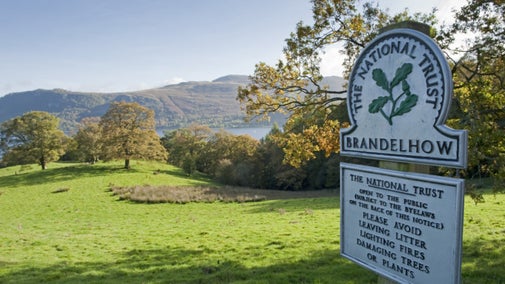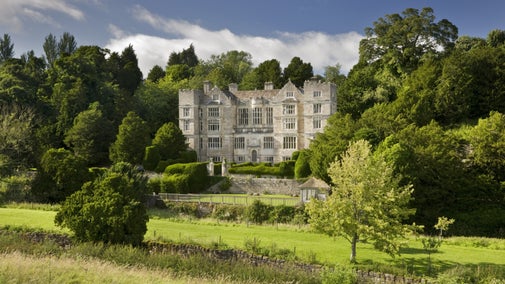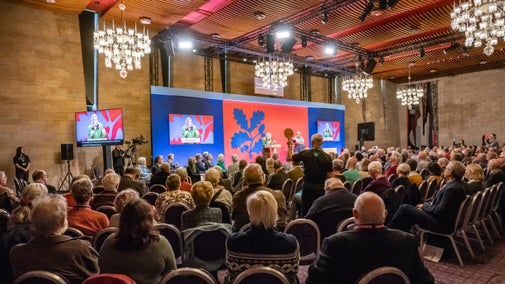
People in history
Discover some of the social history behind the places we care for and uncover fascinating facts about the people who have lived in them.

Canon Hardwicke Rawnsley was a charismatic and passionate man, whose devotion to protecting land from development and energetic campaigning style led to his well-deserved nickname of ‘Defender of the Lakes’. His belief in preserving the natural landscape for everyone to enjoy for ever is as important today as it was over 125 years ago, when he helped to found the National Trust.
Hardwicke Drummond Rawnsley and his twin sister Frances Anne were born on 28 September 1851 to a large family of ten children. They grew up in the small village of Shiplake in Oxfordshire, where their father was a parish priest.
It was when studying at Balliol College, Oxford, that Hardwicke first began to take an active interest in social reform, after meeting the radical thinker and social activist John Ruskin.
He joined Ruskin’s ‘Hinksey roadmenders’, working to rebuild the rutted road to Hinksey, a working-class area on the edge of Oxford, to improve their access into city. Although the road was never finished, it fired Hardwicke's crusader spirit and confirmed his enthusiasm of taking practical action for social change.
In 1875 he began work as a lay preacher in Soho, London and volunteered at a lodging house for vagrants. He also met social activists (and later fellow founders of the National Trust) Octavia Hill and Robert Hunter for the first time, introduced to them by Ruskin.
He was appointed chaplain to the Clifton College Mission where he lived and provided both education and recreation (including country walks) for residents in one of the poorest parts of Bristol. According to his biographer, Vivian Griffiths, 'He was horrified by the workers’ living conditions, in poorly-built, damp houses.' Realising the health benefits of fresh air and exercise, he set about organising football matches and walks in the countryside for them.
Whilst holidaying in the Lake District in 1875, Hardwicke had met Edith Fletcher, the daughter of an Ambleside coal merchant. Their friendship blossomed into love and in 1878 they were married.
Rawnsley continued his social work when he moved to the Lake District with Edith, where he became vicar of Wray near Windermere. Edith shared many of Hardwicke's ambitions for social reform and they proved to be a great double-act, working together to establish many new initiatives.
One of the first, at Ruskin’s suggestion, was setting up a parish workshop, teaching metalwork, woodwork and needlework to the unemployed of their parish.
When they later moved to Keswick, Hardwicke founded the Keswick and District Footpaths Preservation Society to argue against the closure of footpaths and to recognise public ‘rights of way’. He also became a Keswick town councillor, using his position to oppose developments he felt would spoil the beauty of the mountain passes.
His campaigns had once again brought him into contact with Octavia Hill and Robert Hunter, who were members of the Commons Preservation Society. Together they founded the National Trust for Places of Historic Interest or Natural Beauty in 1895.
As Honorary Secretary, Hardwicke headed up fundraising campaigns for some of the National Trust’s first acquisitions, including Brandelhow by Derwent Water.
– Vivian Griffiths, biographer of Canon Hardwicke Rawnsley

A man of many interests, Hardwicke was a regular traveller, visiting many countries including the USA, Egypt and the Holy Land. He was also a keen writer, publishing many books, pamphlets and articles on a wide range of subjects.
He became friend and mentor to children's author and illustrator Beatrix Potter, helping her to publish her first book, The Tale of Peter Rabbit.
When he died on 28 May 1920, Hardwicke left his home of Allan Bank in Grasmere to the National Trust. Friar's Crag, Derwent Water, was also donated to our care after it was purchased with money raised in a public subscription in his memory.
Hardwicke was a significant influence for Beatrix Potter, an early supporter of the National Trust, and encouraged her love of the Lake District. On her death in 1943 Potter donated 4,000 acres of protected land in the Lake District to us.
Now more than 125 years on from our founding, we continue to care for the land Hardwicke saved from development, and, thanks to the generous donations of our supporters, we now care for over 250,000 hectares of farmland and 780 miles of coastline for everyone, for ever.

Discover some of the social history behind the places we care for and uncover fascinating facts about the people who have lived in them.
One of three founders of the National Trust, Octavia Hill is among the greatest social entrepreneurs in British history and the impact of her life and work is still felt today.

Find out about the work of Robert Hunter and how his job as a solicitor helped shape the National Trust.

Discover the history of the National Trust, from its foundation in the 19th century, through key projects, wartime and epidemics, to the modern day.

Discover more about our legacy, people and values as a conservation charity. We protect historic places and green spaces while opening them up for everyone, for ever.

Discover how the National Trust is run, how our governance arrangements are underpinned by Acts of Parliament and how they are designed to support and challenge our staff.

We're committed to meeting the needs and expectations of a diverse society. Find out what we're doing to create an inclusive, accessible and welcoming environment for our supporters, staff and volunteers.

The first National Trust Act passed in 1907. Successive Acts have since been introduced to ensure the National Trust continues to be well governed and remains true to its cause.
